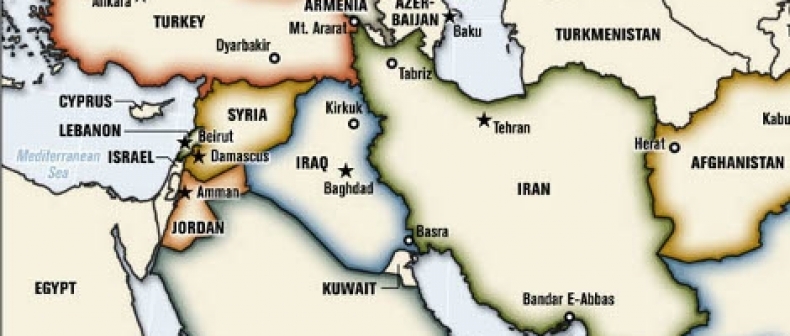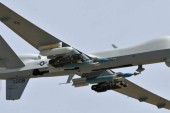
Following the death of 23 al-Qaeda-linked militants and probable future leader Abu Yahya al-Libi, the future of the terror syndicate is in question.
Prior to 2001, al-Qaeda had a coherent and centralized leadership. Orders were given in a top-down hierarchical fashion. According to the typology developed by counter-terrorism experts Shaul Mishal and Maoz Rosenthal, the US-led invasion of Afghanistan has forced al-Qaeda to remodel itself into a “dune” organization.
This means that al-Qaeda has now become a nomadic enemy, constantly moving from one territory to another, altering its operational character and short-term goals each time it relocates. “Al-Qaeda acts as a fast-moving entity that associates and dissociates itself with local elements while maintaining its global character,” explains Mishal and Rosenthal.
Al-Qaeda’s authority is decentralized while its operatives remain loosely networked with an unknown number of affiliated groups. The terror organization is constantly adapting to new environments and responding to the local agenda from wherever it operates. Its organizational reality is “built on its disappearance” while it’s flexible short-term agenda encourages it to interact with other like-minded organizations. As a result, its command and communication chains may be disregarded, intentionally fragmented or severed at any point in time.
It is currently believed that al-Qaeda operates as follows: a single trainer recruits others to form a cell; the trainer will then continue to travel and set up 3-5 autonomous cells in different locations. Only the trainer knows about the other cells and its members. Once these cells have been formed, the trainer will engage in an attack, often a suicide operation, erasing the link between the cells. As a result of this operational structure, attacks can be carried out by both al-Qaeda and its local affiliates in loosely defined intervals of time, achieving specific outcomes despite differing modus operandi and without rigid coordination.
With this change in structure comes a change in threat. Today al-Qaeda is a more globalized and widespread organization than it was in 2001. Despite the assassinations of key al-Qaeda figures such as Osama Bin Laden, Anwar al-Awlaki, Saeed al-Masri, and other operational commanders and spokespeople, al-Qaeda’s recruitment capabilities, operational sophistication and Islamist doctrine remain a pressing threat in multiple regions.
Since al-Qaeda’s organizational structure is constantly reforming, its operatives have become more difficult to monitor and track, straining the ability of security forces to thwart attacks. Al-Qaeda is currently believed to be operational in roughly 60 countries, forcing its networks to pursue different short term goals as long as they fit within the wider global jihadist agenda. These goals can range from overthrowing governments, defeating competing Islamist influences, exterminating perceived apostates, producing and facilitating transit routes for drug and weapons trafficking, or disrupting oil supplies.
By providing ideological, material, and financial support, al-Qaeda is able to “piggyback” on local struggles–as has been the case with the organization officially supporting al-Shabaab in its fight against Somalia’s transitional government. This type of partnership allows al-Qaeda to continue to exert power and influence, despite its own operational setbacks. Having been deprived of a centralized leadership and an operational safe-haven, al-Qaeda no longer has the capacity to conduct an attack with a 9/11 type magnitude. The central leadership’s new strategic doctrine is to carry out multiple low-intensity attacks, in close proximity to one another, against the US and its allies or interests abroad.
In short, al-Qaeda’s new goal is to carry out “Mumbai Style” attacks (like the one conducted by Lashkar-e-Taiba in Mubai, India in 2008) that will kill many people and terrorize the public with simple low-intensity weapons. Thwarting these attacks is extremely difficult and requires a steady flow of intelligence, greater international cooperation, strong deterrent capabilities and steadfast determination.
Theatre of Operations
Today, African nations face a greater threat from al-Qaeda than any other area of the globe. With networks and splinter-cells finding safe-havens across the continent, al-Qaeda has channeled its outreach and recruitment directives in three critical areas: The Sahel, West Africa, and the Horn of Africa.
Home to affiliates such as al-Qaeda in the Islamic Maghreb (AQIM), al-Shabaab, the Libyan Islamic Fighting Group, and several others, al-Qaeda has been exploiting the un-governed or under-governed territory across the continent for years. The lack of effective governance has allowed these groups to build bases of operation while remaining elusive in areas where it is easy for them to avoid detection, slip across borders and harass government forces and civilians. With countries like Mali, Algeria, Nigeria, and Somalia under intensive threat from al-Qaeda and its affiliates, regions once overlooked in Western policy circles have not become the most relevant theaters of operation in the fight against global jihad.
David Shinn explains why conditions in these states are particularly ripe for al-Qaeda’s exploitation:
“Poverty is widespread. Social and economic inequality is common. Political marginalization of minority groups exists in every country. Corruption is a serious problem throughout the region. Land and sea borders are especially porous. Populations in each country are either predominantly Muslim or have an important Muslim minority. All of the countries are relatively close to the origin of al-Qaeda strength in the Middle East and South Asia. In fact, one might ask why al-Qaeda has not had more success in the region than it has exhibited so far. “
In addition to the fertile ground these areas exhibit for Islamist indoctrination, they offer major strategic significance since these states border the Red Sea, Mediterranean Sea, Gulf of Guinea and the Gulf of Aden. These regions are also home to large oil and mineral deposits. Moreover, many of these states have cultural and historical significance in Islamic history, complementing al-Qaeda’s propaganda and recruitment efforts.
As state security services struggle to maintain effective authority, al-Qaeda and its affiliates have been eager to fill the political and security voids created by negligent governments, allowing territory to come under de facto insurgent control. With instability and conflict spreading, regional states must continue their counter-terror operations in coordination with Western nations to ensure inter-agency cooperation, port security, border control, military and special operative training, and effective emergency response. In addition, states must launch a widespread de-radicalization campaign by providing greater social and educational services, overseeing supply and maintenance of agricultural harvests and water provision, protecting the local populations from exploitation by corrupt officials and insurgent infiltration, and overcoming deeply rooted religious fault lines.
Failure to do so will increase the vacuum of ungoverned spaces in the region, giving al-Qaeda and its like-minded affiliate’s new strongholds to recruit, train and launch attacks from, jeopardizing the region further and undermining regional counter-terrorism campaigns.
—
Jason Wiseman is a Senior Counter-Terrorism Analyst at the Atlantic Council of Canada. He writes about foreign affairs.
For more, follow us on Twitter at @TorontoStandard and subscribe to our newsletter.














